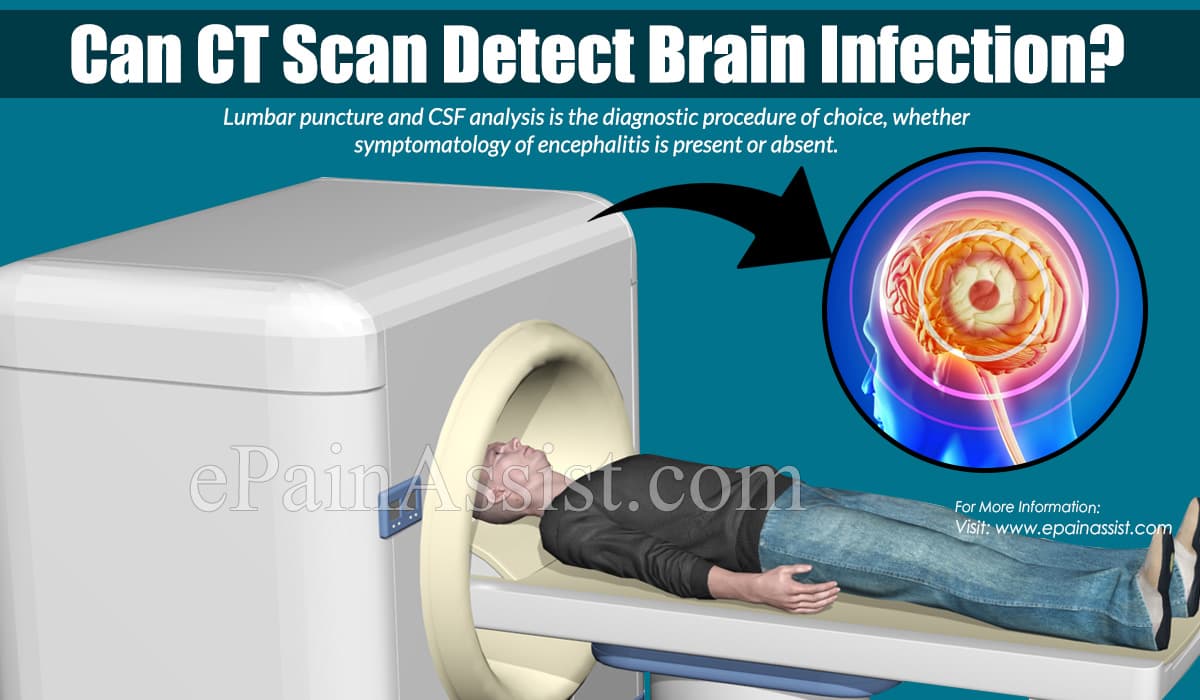Brain infections are rare, but they carry significant mortality and are associated with poor prognosis. Although, the incidence of brain infections has diminished due to therapeutic advancement, they are still health hazard to people in developing countries with poor sanitation. The diagnosis of a patient with brain infection is based on the medical history, clinical presentation, cerebrospinal fluid analysis and imaging. CSF analysis is the gold standard for detecting brain infection in a patient. Although, imaging (CT scan, MRI) is not always indicated in an emergency acute phase of brain infection, they are of vital importance in majority of cases, especially in the presence of focal neurological signs, particular patients (such as immunocompromised patients) diagnostic difficulty and follow up difficulty during treatment. In absent or less severe neurological signs, imaging can help in diagnosing the nature of infection, especially in the presence of a brain lesion. (1)

Can CT Scan Detect Brain Infection?
Lumbar puncture and CSF analysis is the diagnostic procedure of choice, whether symptomatology of encephalitis is present or absent. Imaging is usually preceded by lumbar puncture in cases of encephalitis to look for signs of brain damage and signs of engagement. MRI and CT scan are the two main imaging techniques employed for the diagnosis of brain infection. MRI is used for a more confirmatory diagnosis of infection; whereas, CT scan is used just as an investigative tool and additional examination. (1)
In suspected bacterial meningitis with clouded consciousness, an immediate CT scan is preferred prior to lumbar puncture to rule out causes of swelling that may result in herniation. It is important to start antimicrobial therapy prior to CT scan or lumbar puncture. The early phase of meningitis may show normal CT scan; however, contrast enhanced CT may show the initiation of meningeal enhancement that becomes more pronounced as the disease progresses. CT scan is great at identifying pathologies of the base of the skull. CT venography can be used to diagnose transverse and sagittal sinus complicating thrombosis that necessitates intervention. Repeat CT should be considered with worsening signs to rule out resorptive hydrocephalus. (2)
MRI is usually not routinely ordered for uncomplicated bacterial meningitis. However, complicating cases with seizures and evolving focal signs demand MRI, which are superior to CT for the evaluation of parenchymal lesions in meningoencephalitis or vasculitic complications on FLAIR (fluid-attenuated inversion recovery) sequences. Brain stem lesions, pyogenic ventricultis are more sensitive to an MRI. The imaging of choice for subdural and epidural empyema is an MRI scan as a CT scan may not be helpful in determining the nature of lesion and its location. Pyogenic brain abscesses are a diagnostic challenge, as they be difficult to diagnose in a CT scan or an MRI; however, Gd-enhanced MRI (for multiple lesions) and biopsy (for single lesions) are helpful. CT scan is of little value for spinal cord and meningeal involvement, viral meningoencephalitis, and fungal infections. In these cases, MRI is the preferred choice of imaging. (2)
How To Know If There Is A Brain Infection?
The infection of central nervous system can be due to either hematological pathway, damage to the adjacent structures and contiguity, neural way, and direct contamination (through surgeries and cranial wounds). There are numerous brain infections and their symptomatology depends on the causative agent (bacteria, virus, fungi, parasites, mycobacteria) and type of patient (immunocompromised, immunocompetent, immune restoration, traveling). (1)
The clinical presentation may either be in the form of meningitis, or encephalitis or a combination of both. Meningitis symptoms include headache, fever, nausea and vomiting and neck stiffness. Encephalitis symptoms encompass seizures, focal neurological signs, behavioral disorders and consciousness disorders. Encephalitis signs pursue complications of an abscess, meningoencephalitis and bacterial meningitis. However, due to the type of bacteria and patients, these clinical presentations may be elusive causing difficulty in diagnosis. Therefore, diagnostic process is carried out based on the symptomatology at the beginning of the disease. (1)
Also Read:
